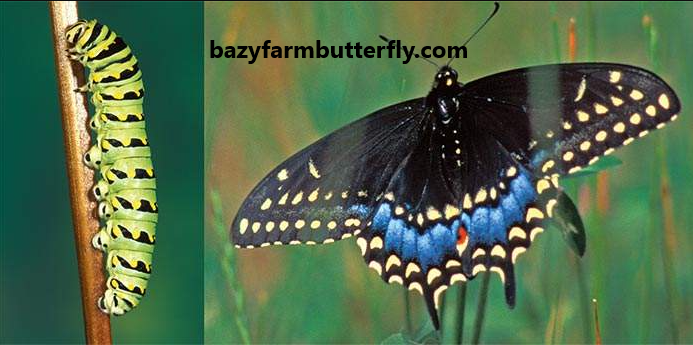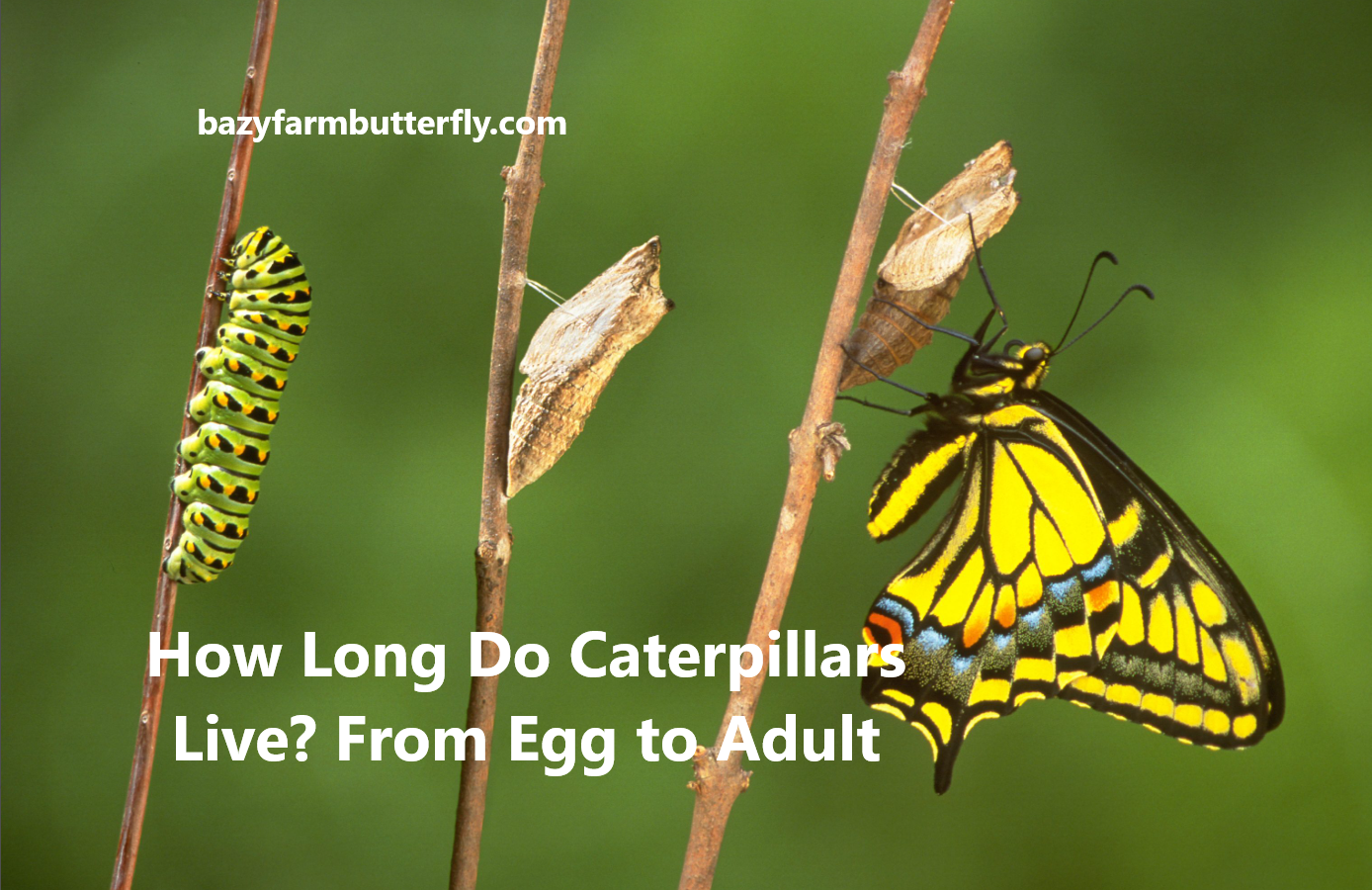One of the most fascinating groups of insects is the caterpillars. These Lepidoptera larvae go through a procedure called metamorphosis, which makes them into lovely adult butterflies. They go through several phases of development from egg to adult, each with its own characteristics and difficulties. In this article, Bazy Farm will examine the various phases of the caterpillar life cycle and provide a response to the query, “How long do caterpillars live?”
How Long Do Caterpillars Live?

The lifespan of caterpillars varies widely depending on the species. During their larval stage, caterpillars undergo a significant amount of growth, increasing their body mass by as much as 1,000 times or more. As they grow, they molt multiple times due to the limited liability of their skin.
While some species of caterpillars, such as the Painted Lady butterfly, are fully grown and ready to pupate within a few weeks of hatching from an egg, others will over-winter in preparation to complete their growth and pupate the following spring.
However, the provided web search results did not yield a specific answer regarding the lifespan of caterpillars. It is essential to note that the lifespan of caterpillars can also vary depending on environmental factors, such as predation, disease, and weather conditions.
The Stages of the Caterpillar Life Cycle

Stage 1: The Egg
How long do caterpillars live? The life cycle of a caterpillar begins when a female butterfly or moth lays her eggs, usually on the leaves or stems of plants. Depending on the species, the eggs can vary in shape, size, color, and texture. Inside these tiny eggs, the caterpillar grows and develops for several days to several weeks. The time it takes for the eggs to hatch can also vary depending on the species and environmental conditions.
Stage 2: The Larva (Caterpillar)
After hatching from the egg, the caterpillar emerges and begins to feed on the leaves and stems of plants. Most caterpillars grow rapidly and molt their skin several times as they increase in size. Unlike humans, the caterpillar has its skeleton on the outside, which is known as an exoskeleton. It takes about two weeks for a larva to grow to its full size (about 2 inches long) before it is ready to form a pupa or chrysalis.
Stage 3: The Pupa (Chrysalis or Cocoon)
When the larva is fully grown, it stops feeding and attaches itself to a surface such as a leaf or twig. It then begins to form a pupa or chrysalis around its body using silk and other materials. Inside the pupa, the caterpillar undergoes a remarkable transformation, breaking down its body and reorganizing its cells into the body of an adult butterfly or moth. Most caterpillars stay in their chrysalis for about 5-21 days before emerging as an adult butterflies.
Stage 4: Adult Butterfly
The final stage of the caterpillar life cycle is the emergence of the adult butterfly. After the pupa stage, the adult butterfly emerges from the chrysalis and expands its wings. It then flies away to find a mate and begin the cycle anew. Depending on the species, the adult butterfly can live from a few days to several months.
Factors that Affect the Lifespan of Caterpillars

Diet
How long do caterpillars live? One of the most crucial factors that affect the lifespan of caterpillars is their diet. Caterpillars have specific dietary requirements that need to be met for them to develop correctly. The quality and quantity of the food they eat can have a significant impact on their growth rate and overall health. Caterpillars that have access to a varied and nutritious diet tend to have a longer lifespan than those that do not.
Environment
The environment in which the caterpillar lives also plays a crucial role in determining its lifespan. Temperature, humidity, and other environmental factors can impact the development and growth rate of the caterpillar. For instance, a caterpillar that lives in a warm and humid environment may develop faster than one that lives in a cooler and drier climate.
Predators
Caterpillars are preyed upon by many animals, including birds, reptiles, and other insects. The presence of predators can have a significant impact on the lifespan of caterpillars. For instance, caterpillars that live in areas with high predator density may have a shorter lifespan than those that live in areas with low predator density.
Genetics
The lifespan of caterpillars is also influenced by their genetics. Different species of caterpillars have different lifespans, and some individuals within a species may live longer than others. Factors such as the genes responsible for growth, development, and aging can all influence the lifespan of a caterpillar.
Conclusion
In conclusion, the lifespan of caterpillars is determined by several factors, including diet, environment, predators, and genetics. Caterpillars that have access to a nutritious diet, live in favorable environments, have fewer predators, and possess beneficial genes tend to have a longer lifespan. Understanding the factors that affect the lifespan of caterpillars can help us appreciate the critical role they play in the ecosystem.
Video:

